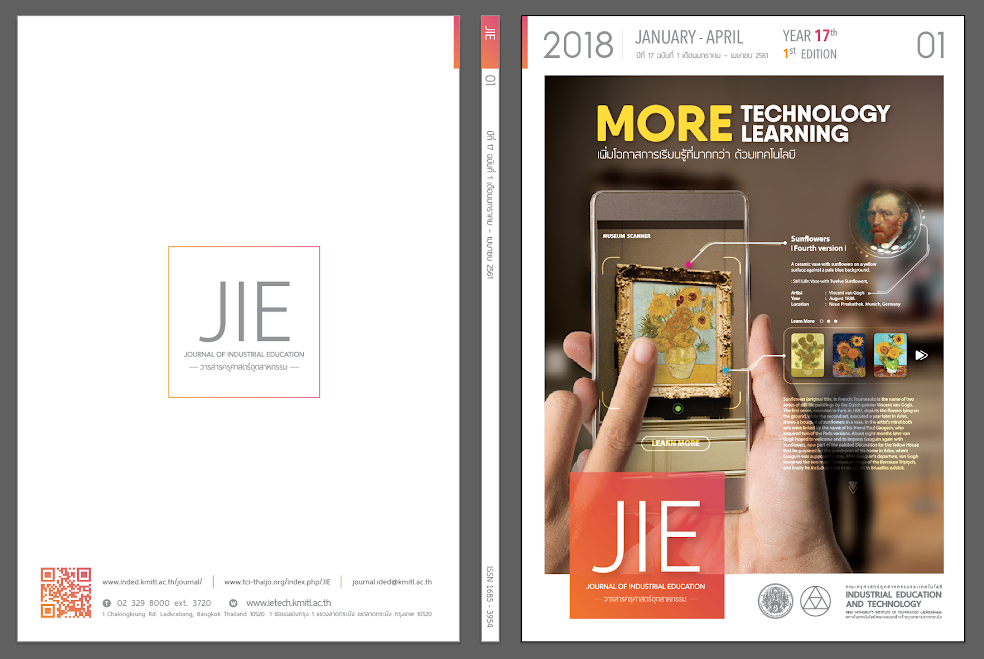THE FACTOR ANALYSIS INFLUENCING ON THE PERFORMANCE OF SUPPLY CHAIN MANAGEMENT IN DAIRY MILK INDUSTRY, SAKAEW PROVINCE
Keywords:
supply chain, supply chain management, dairy milk industry, the performance of supply chain managementAbstract
The research was aimed to 1) study component influencing on the performance of supply chain management in dairy milk industry, Sakaew Province, and 2) create the performance of supply chain management in dairy milk industry, Sakaew Province in order to study the examination of supply chain performance in dairy milk industry, Sakaew Province on the further. Samples in this study are staffs whose job is related to the purchase in the supply chain of ready-to-drink milk, there were 36 people by using self-enumeration method to collect data, and analysis by percentage and factor analysis (principal component analysis). The result showed that 1) supply chain reliability, expenses of costs, quality performance can be conceptualized as component influencing on the performance of supply chain management in dairy milk industry, Sakaew Province, and 2) author proposed that the performance of supply chain management in dairy milk industry, Sakaew Province in the name of “REQ” Model for examine supply chain performance in dairy milk industry, Sakaew Province.
References
[2] Cousins, PD., & Menguc, B. 2006. The Implications of Socialization and Integration in Supply Chain Management. Journal of Operations Management. 24(2006), p. 604-20.
[3] Flynn, BB., Huo, B., & Zhao, X. 2010. The Impact of Supply Chain Integration on Performance: A Contingency and Configuration Approach. Journal of Operations Management. 28(2010), p. 58-71.
[4] Handfield, R., Krause, D., 1999. Think Globally, Source Locally. Supply Chain Management Review. 39(1999), p.36-49.
[5] MacDuffie, J., & Helper, S., 1997. Creating Lean Suppliers: Diffusing Lean Production through the Supply Chain. California Management Review. 39(1997), p. 118–151.
[6] Wangnamyen Dairy Cooperative Limited. 2017. Background “Wangnamyen Dairy Cooperative Limited”. [online]. Retrieved from https://www.wangnamyendairy.com/ (January 24, 2017).
[7] Sub-district Administration Organization Staff. (2017, September 6). Dairy Farm. [Interview].
[8] Ponanake, P. & Bunnag, T. 2016. The Performance of Sakaeo Province Dairy Milk Product’s Supply Chain Collaboration on Competitive Advantage for entering Sakaeo Special Economic Zone. Research of Burapha University through National Research Council of Thailand.
[9] Ponanake, P. & Bunnag, T. 2016. Cost of Quality and Core Competency on Preparing of Wangnamyen Dairy Co-operative Entering to Sakaeo Special Economic Zone. Journal of Industrial Education. 15(2), p. 131-137.
[10] Choengdee, Ch. (2017, March 20). Warehouse Manager Wangnamyen Dairy Cooperative Limited. [Interview].
[11] Wanichbuncha, K. & Wanichbuncha, T. 2017. Using SPSS for Windows to data. 29ed. Bangkok: Samlada.
[12] Lin, F., Huang, S., & Lin, S. 2002. Effects of Information Sharing on Supply Chain Performance in Electronic Commerce. IEEE Transactions on Engineering Management, 49(3), p. 258–68.
[13] Premus, R., & Sanders, NR. 2010. Information Sharing In Global Supply Chain Alliances. Journal of Asia Pacific Business, 9(2), p. 174-192.
[14] Soosay, CA., Hyland, PW., & Ferrer, MM. 2008. Supply Chain Collaboration: Capabilities For Continuous Innovation. Supply Chain Management: An International Journal, 13(2), p. 160-169.
[15] Li, S, & Lin, B. 2006. Accessing Information Sharing and Information Quality in Supply Chain Management. Decision Support Systems, 42(2006), p. 1641-1656.
[16] Landeros, R., & Monczka, R.M. 1989. Cooperative Buyer/Seller Relationships and A Firm’s Competitive Posture. Journal of Purchasing and Materials Management. 25(3), p. 9–18.
[17] Fynes, B., Burca, SD., & Mangan, J. 2007. The Effect of Relationship Characteristics on Relationship Quality and Performance. International Journal of Production Economics. 111(2008), p. 56–69.
[18] Kocoglu, I. et al. 2011. The Effect of Supply Chain Integration on Information Sharing: Enhancing the Supply Chain Performance. Procedia Social and Behavioral Sciences. 24 (2011), p. 1630-1649.
[19] Yu, MM., Ting, SC., & Chen, MC. 2010. Evaluating The Cross-Efficiency of Information Sharing in Supply Chains. Expert Systems with Applications. 37(2010), p. 2891-2897.
[20] Zhou, H., & Benton, WC. 2007. Supply Chain Practice and Information Sharing. Journal of Operations Managements. 25(2007), p. 1348-1365.
[21] Hult, G.T.M. et al. 2006. Knowledge as A Strategic Resource in Supply Chains. Journal of Operations Management. 24 (5), p. 458–475.
[22] Panayides, P., & Lun, V.Y.H. 2009. The Impact of Trust on Innovativeness and Supply Chain Performance. International Journal of Production Economics. 122(2009), p. 35–46.
[23] Shin, H., Collier, D.A., & Wisner, J.D. 2000. Supply Management Orientation and Supplier/Buyer Performance. Journal of Operation Management. 18(2000), p. 317-333.
[24] Tan, K.C., Lyman, S.B., & Wisner, J.D. 2002. Supply Chain Management: A Strategic Perspective. International Journal of Operations and Production Management. 22(2002). p. 614–631.
[25] Angsuchote, S., Wichitwanna, S. & Phinyophanuwat, R. 2008. Statistical Analysis for Social Science Research and Behavioral Sciences: Using LISREL Programs Techniques. Bangkok: Mission Media.
Downloads
Published
How to Cite
Issue
Section
License
"The opinions and contents including the words in papers are responsibility by the authors."
"ข้อคิดเห็น เนื้อหา รวมทั้งการใช้ภาษาในบทความถือเป็นความรับผิดชอบของผู้เขียน"



